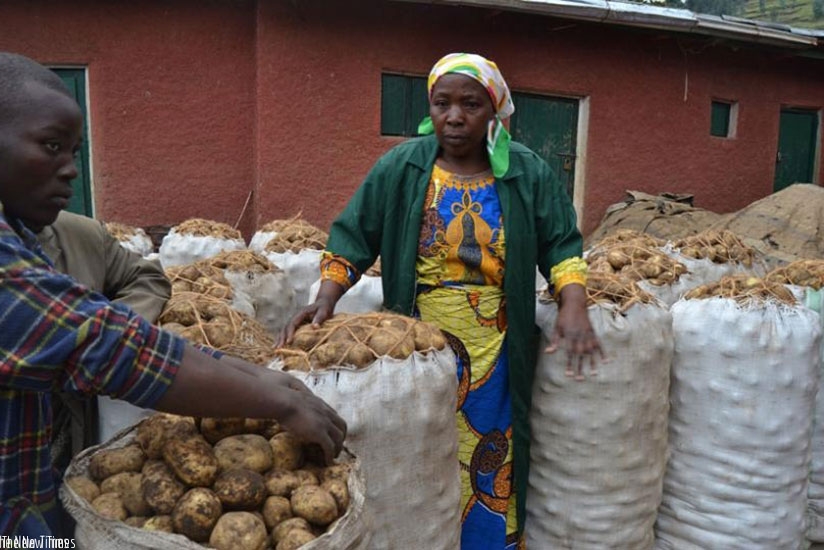The new blended fertilisers have raised optimism among farmers after research showed that they could help almost double yields compared to the current ones on the market.


The new blended fertilisers have raised optimism among farmers after research showed that they could help almost double yields compared to the current ones on the market.
The blended fertilisers boast of more micronutrients, according to researchers, and are made by mixing sulphur, zinc, boron and copper among others and NPK, that has been used by farmers for a long time. The farmers’ optimism was raised, last week, after visiting the Irish potato demonstration plots in Rulindo District where the blended fertilisers are being tried.
Vicky Ruganzu, a researcher at Rwanda Agriculture Board (RAB), who has been part of the research project since 2014, said the new blended fertilisers can help spur yield per hectare to between more seven and eight tonnes.
"The yields could improve from 24 tonnes per hectare to about 34 tonnes in volcanic soils, while it could increase from 18 tonnes to 26 tonnes per hectare in other soil types,” he said.
Ruganzu revealed that they are trying the fertilisers on 200 Irish potato demonstration plots across the country. Five of these plots are in Rulindo. The new blended fertiliser was developed by RAB and is produced by OCP Africa, a Morocco-based global fertiliser maker.
Farmer experience
Eugenie Musabyeyezu, a farmer in Murama cell, Kisaro sector, who participated in the fertiliser testing project, said she planted 50 kilogrammes of Irish potato seeds and harvested 600 kilogrammes compared to 200 kilogrammes harvested previously after planting 100 kilogrammes on the same piece of land.
Musabyeyezu is now urging Rwanda Agriculture Board (RAB) to avail the micronutrients to farmers to support crop production in the country.
"We want to know how we can access the fertilisers,” she said during the tour of the demonstration plots by researchers and farmers. The farmer added that the crop on the plot where she used only NPK does not look as health as the one with new blended fertilisers.
Consolee Rehema, a farmer in Mwumba cell, Buyoga sector, said the potatoes where she applied the new blended micronutrients look well-nourished and attractive compared to those where she did not use them. "If we access the new fertilisers, we will expand Irish potato production … I have been planting on two small pieces of land where I could harvest 400 kilogrammes, but I plan to increase this when I get the blended micronutrients.”
Jean Claude Mucye, another farmer, said he currently harvests four tonnes but hopes that once the blended fertilisers are availed on the market, his yields could double.
New fertiliser blending factory in the offing
Patrick Karangwa, the head of research at RAB, said construction works of a factory that will produce blended micronutrients will start in January.
The project is being undertaken by the agriculture ministry in conjunction with partners from Morocco, according to the official. He was confident that farmers could start receiving the fertiliser later next year.
He noted that the move will help reduce the cost of fertilisers besides increasing crop production. "We developed formulas and then sent them to Morocco for blending. But once the factory is here in Rwanda, it will be easy for farmers to access the fertilisers,” he said.


